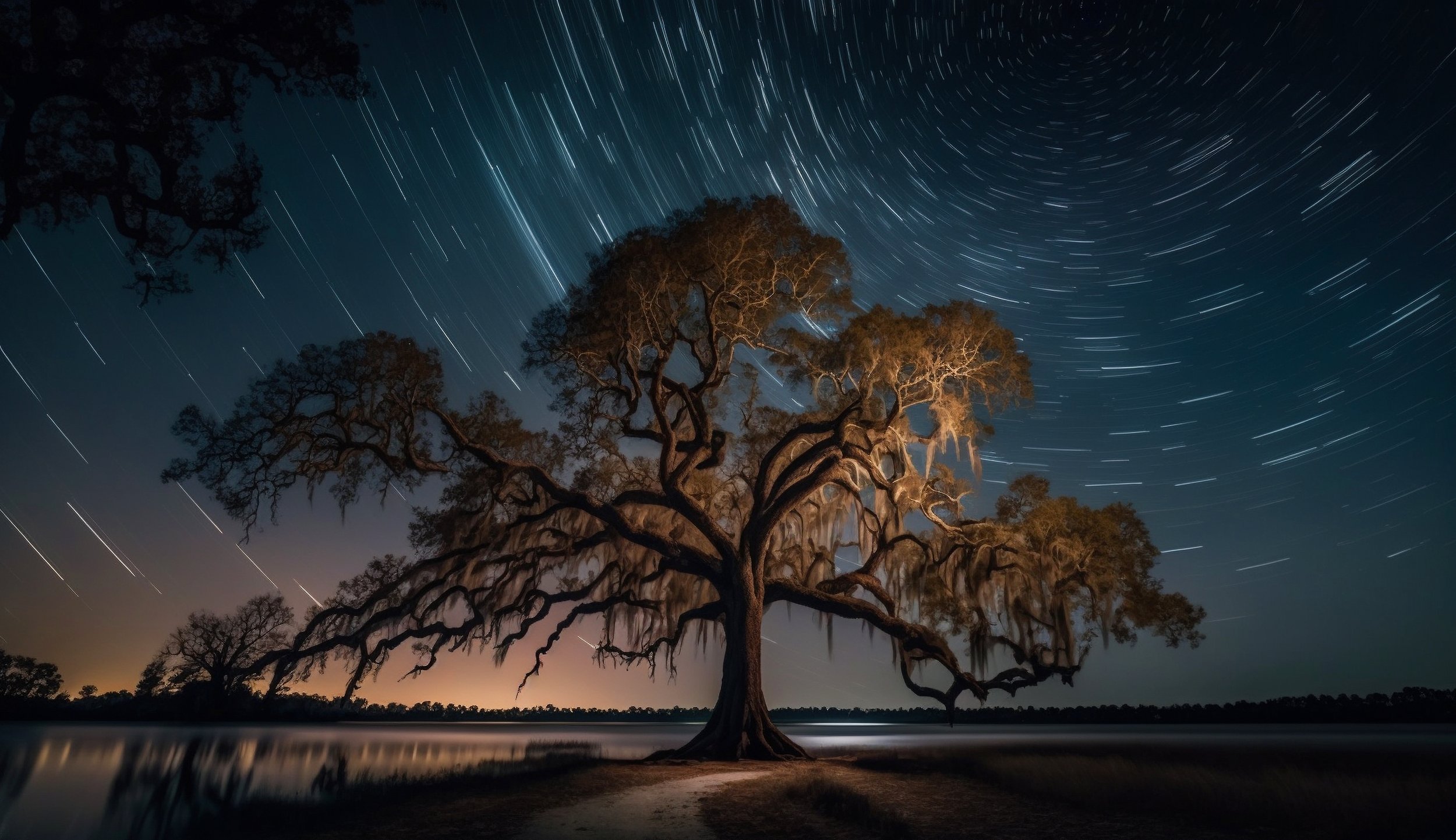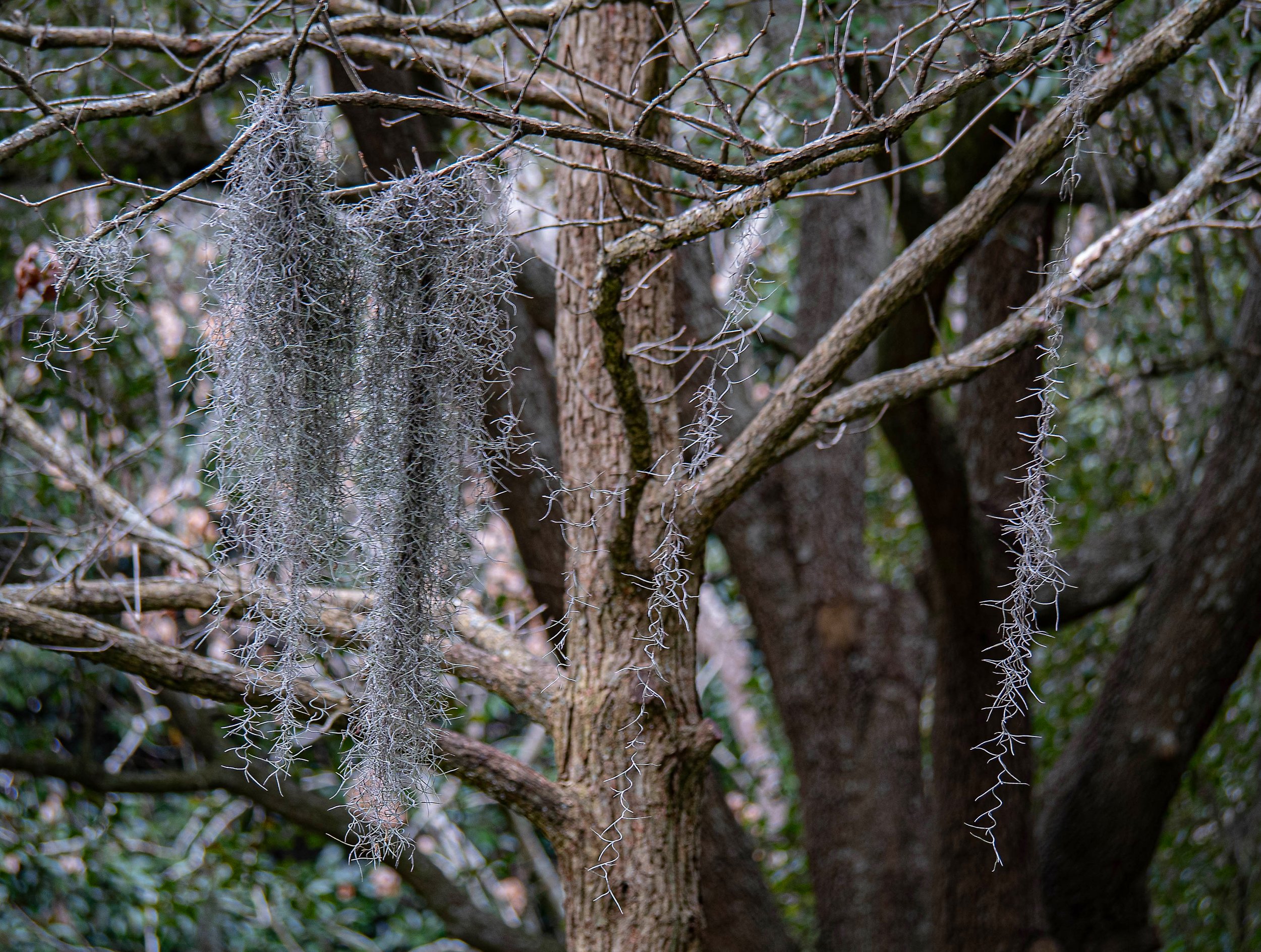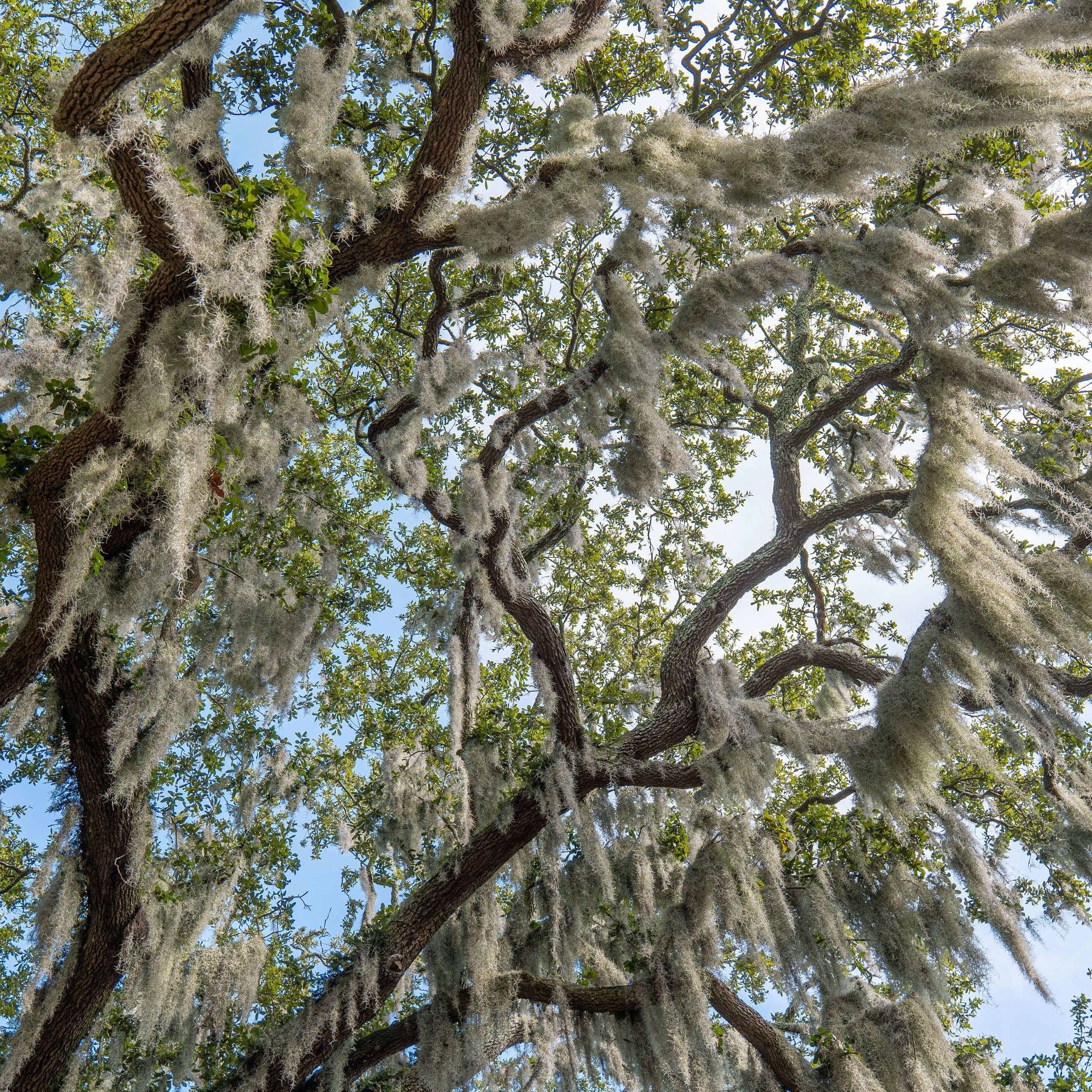What’s Hanging from the Trees in Savannah? - Spanish Moss
Savannah Live Oak Tree with Spanish Moss in the Low Country - All images imagined and curated by Artist Charles Maring
Spanish Moss hanging from a tree in Forsyth Park Savannah GA
Visiting Savannah can sometimes feel like a fairytale. The beauty and charm of this one of a kind city in the south is uniquely it’s own. Those who show up unfamiliar with the area all ask the same question… “What is it that is hanging from the trees?” The answer… Well it’s not so simple.
“Spanish moss” drapes the sprawling live oak trees of Savannah, Georgia, giving the historic city a hauntingly beautiful aesthetic. Yet, it actually isn’t a type of moss at all! Spanish moss is actually a type of epiphyte, which means it grows on the surface of other plants but does not take nutrients from them.
Spanish moss, or Tillandsia usneoides, is native to Central and South America, as well as the southern United States. It is commonly found in coastal areas, swamps, and forests, and it thrives in warm and humid environments. Spanish moss is actually related to the pineapple family.
In Savannah, Spanish moss is most commonly found on the live oak trees that line the streets and squares of the city. Live oak trees, also known as Quercus virginiana, are a staple of the Southern landscape, and their large, sprawling branches provide the perfect habitat for Spanish moss to thrive. The trees can grow up to 80 feet tall and live for several centuries.
Spanish moss has played a significant role in the history of Savannah. During the colonial era, the moss was harvested and used as stuffing for mattresses, upholstery, and even as insulation for homes. It was also used as a source of fiber for weaving baskets and other household items.
In addition to its historical significance, Spanish moss has ecological importance as well. It provides a habitat for a variety of insects, birds, and other wildlife. Birds like the Northern mockingbird and the yellow-billed cuckoo use the moss as nesting material, while insects like the southern cypress tree frog and the silver-spotted skipper butterfly use it as shelter.
A Yellow-Billed Cuckoo Bird in a Spanish Moss Nest • Artist Charles Maring
Despite its beauty and ecological significance, Spanish moss can also be a nuisance. The moss can accumulate in large quantities on power lines, which in turn can cause outages and creating fire hazards for instance. Despite its potential drawbacks, Spanish moss remains an iconic part of the landscape in Savannah, adding to the city's charm and character. Visitors to the city can take in the stunning beauty of the moss-draped live oaks while learning about the history and ecology of this unique plant.
Spanish Moss draping from a live oak tree in downtown Savannah GA • Artist Charles Maring



